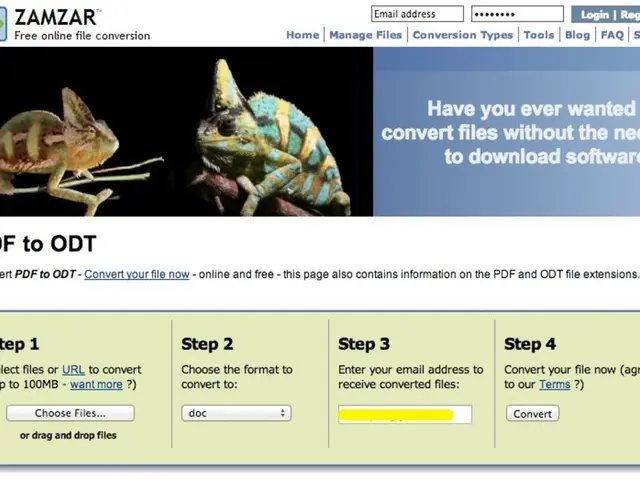Steps for Crafting Captivating Financial Reports with Graphics
Financial statements are essential tools for understanding the operations and financial performance of a business. In today's digital age, incorporating visual aids can significantly enhance engagement and understanding. Here's how to effectively use visuals in financial statements.
Choosing the Right Visual Types
Selecting the appropriate visuals is crucial. Line graphs, for instance, are ideal for showcasing trends like revenue over time, while bar charts are perfect for category comparisons. Pie charts help illustrate proportions, and waterfall charts reveal components of financial performance such as profit variances.
Simplifying and Clarifying
Avoiding jargon and overly complex visuals is key. Present data in a digestible format, using tables combined with charts to provide both detail and visual summary. Include comments or annotations to explain significant deviations or important metrics like profitability ratios.
Using Color Coding and Consistency
Employ intuitive color schemes, such as green for growth and red for decline, to provide immediate cues, enhancing engagement and comprehension. Ensure readability through contrast and legible fonts, also considering accessibility for visually impaired users by including alternative text and high contrast visuals.
Integrating Narrative and Context
Accompany visuals with narrative explanations to contextualize numbers, clarify key business events, and highlight strategic insights. Structuring reports around a story or sequence helps stakeholders grasp the significance of the data better.
Adding Interactivity
Incorporate interactive elements in digital reports or dashboards, such as hover-over details and filtering options, to allow stakeholders to explore data at their own pace, potentially increasing engagement by up to 60-70%.
Limiting Visuals to Key Metrics
Focus on 3-4 critical data points to avoid overwhelming readers, reinforcing retention and driving the main message home.
Testing and Refining Visuals
Gather stakeholder feedback on visual clarity and usefulness to continuously improve your financial reports.
By following these strategies, financial statements become clearer, more engaging, and more actionable for stakeholders, enabling better decision-making based on a comprehensive understanding of financial data.
Universal Layout and Structure
The layout and structure of financial statements are universal across the world. Typically, they include balance sheets, income statements, cash flow statements, statements of change in equity, and other reports.
Professional Financial Report Templates
Professional financial report templates can help create an on-brand, professionally looking, and visually appealing set of financial statements. They are designed for non-designers to create impressive visual content. Using a template can help ensure you've got the right numbers where they're meant to be.
Key Financial Metrics
The income statement shows how much money is going in and out of the business through revenue and expenses. The operating margin shows how much revenue remains once variable costs have been paid. Return on equity shows the profit as a percentage of equity invested in the company. The working capital ratio demonstrates the ability to turn assets into cash to pay off liabilities. The cash flow statement shows how changes in income and balance sheet accounts impact cash.
Annual Reports and Management Decision Making
Most people in management positions prefer information that's easy to understand and easy to look at. Finance professionals use financial statements to help management make strategic decisions that lead the business towards its goals. The annual report includes a letter from the CEO, business performance highlights, and financial or performance projections for the coming years.
Enhancing Visual Appeal
Professional icons can be used for financial report designs to enhance visual appeal. Correct use of brand colors, logo, and brand style guide can give a document a boost of professionalism. The online editor can help easily fulfill reporting obligations and present informative, engaging, and educational financial statements to management and stakeholders in a jargon-free and straightforward way.
Winning Over Stakeholders
Using visual aids can help win over stakeholders when presenting financial statements. By simplifying complex data, incorporating storytelling elements, ensuring accessibility, and using interactivity where possible, financial statements can become clearer, more engaging, and more actionable, leading to better decision-making for the business.
[1] Chartered Institute of Management Accountants (CIMA). (2020). Visualising financial data. Retrieved from https://www.cimaglobal.com/en/knowledge/resources/articles-and-case-studies/visualising-financial-data
[2] Financial Management Advisor. (2021). The importance of visual storytelling in financial reporting. Retrieved from https://www.financialmanagementadvisor.com/2021/04/the-importance-of-visual-storytelling-in-financial-reporting/
[3] Forbes. (2020). How to visualize financial data effectively. Retrieved from https://www.forbes.com/sites/forbesagencycouncil/2020/04/27/how-to-visualize-financial-data-effectively/?sh=5e27f39d780a
[4] McKinsey & Company. (2017). The power of data visualization. Retrieved from https://www.mckinsey.com/business-functions/mckinsey-analytics/our-insights/the-power-of-data-visualization
[5] Tableau. (2021). The art and science of data storytelling. Retrieved from https://www.tableau.com/learn/art-and-science-data-storytelling
- To effectively enhance the presentation of financial data, consider using professional financial report templates that offer an on-brand, visually appealing layout and include popular visualization tools like line graphs, bar charts, pie charts, and waterfall charts.
- Incorporating simplified and easily digestible data visualizations, such as data visualizations in a digital dashboard with filtering options or hover-over details, can significantly boost stakeholder engagement, potentially increasing engagement by up to 60-70%.
- As part of a comprehensive financial statement, data visualization can help investment stakeholders make strategic decisions by illustrating key financial metrics such as the operating margin, return on equity, working capital ratio, and cash flow statement, thus enabling better decision-making based on a comprehensive understanding of financial data.




